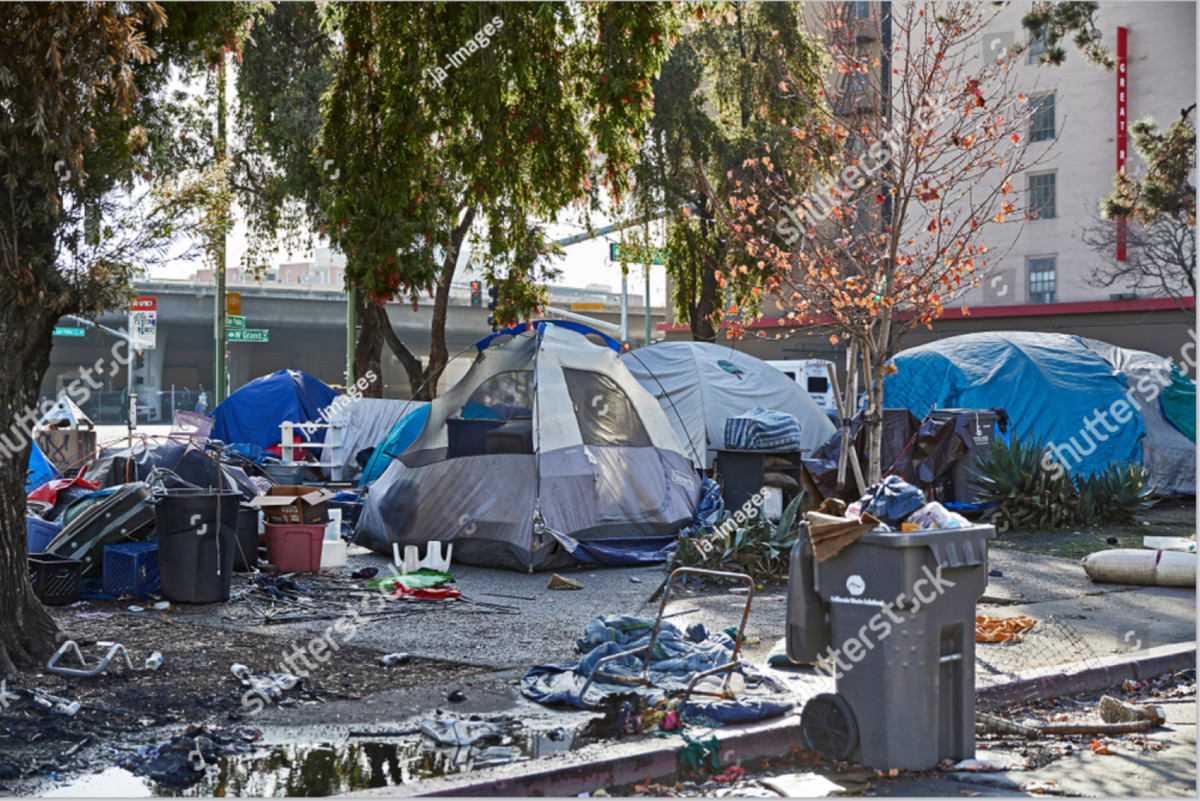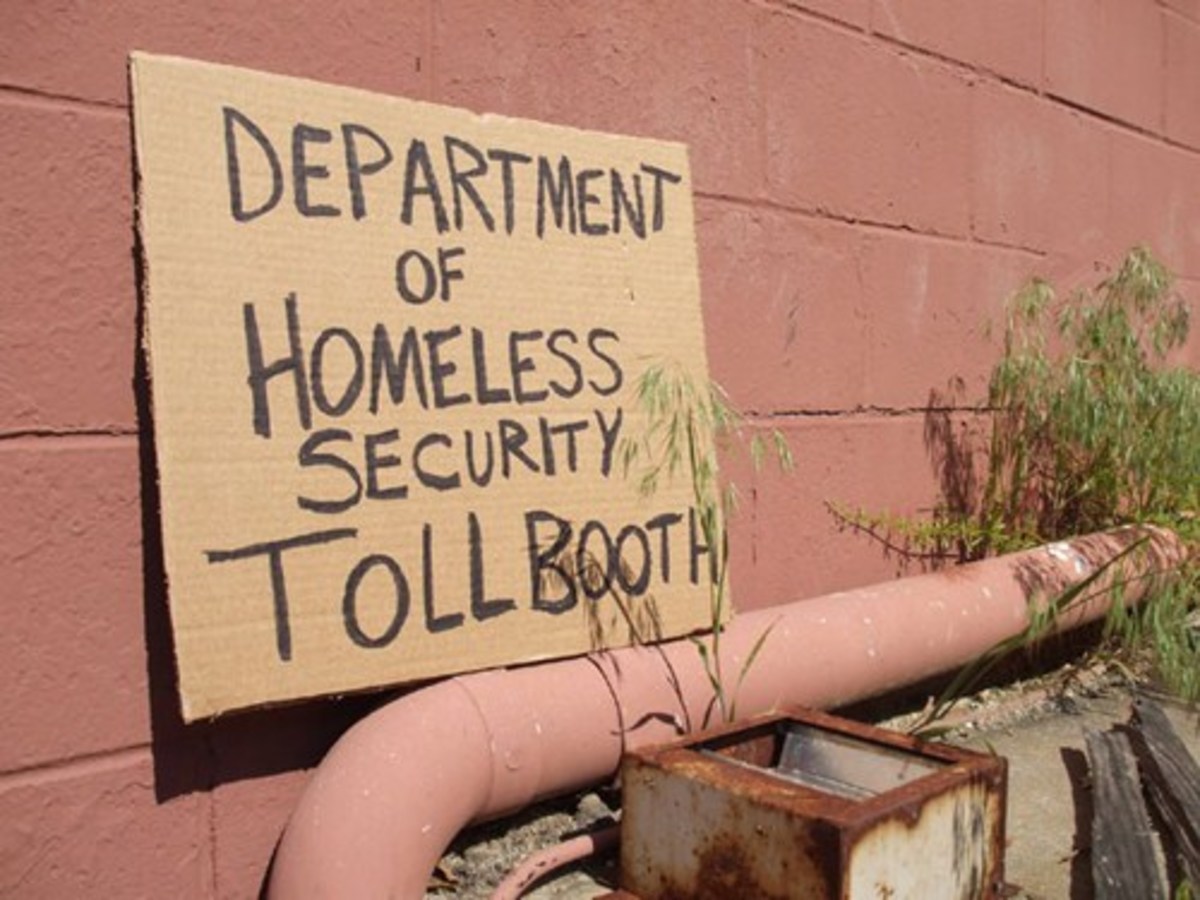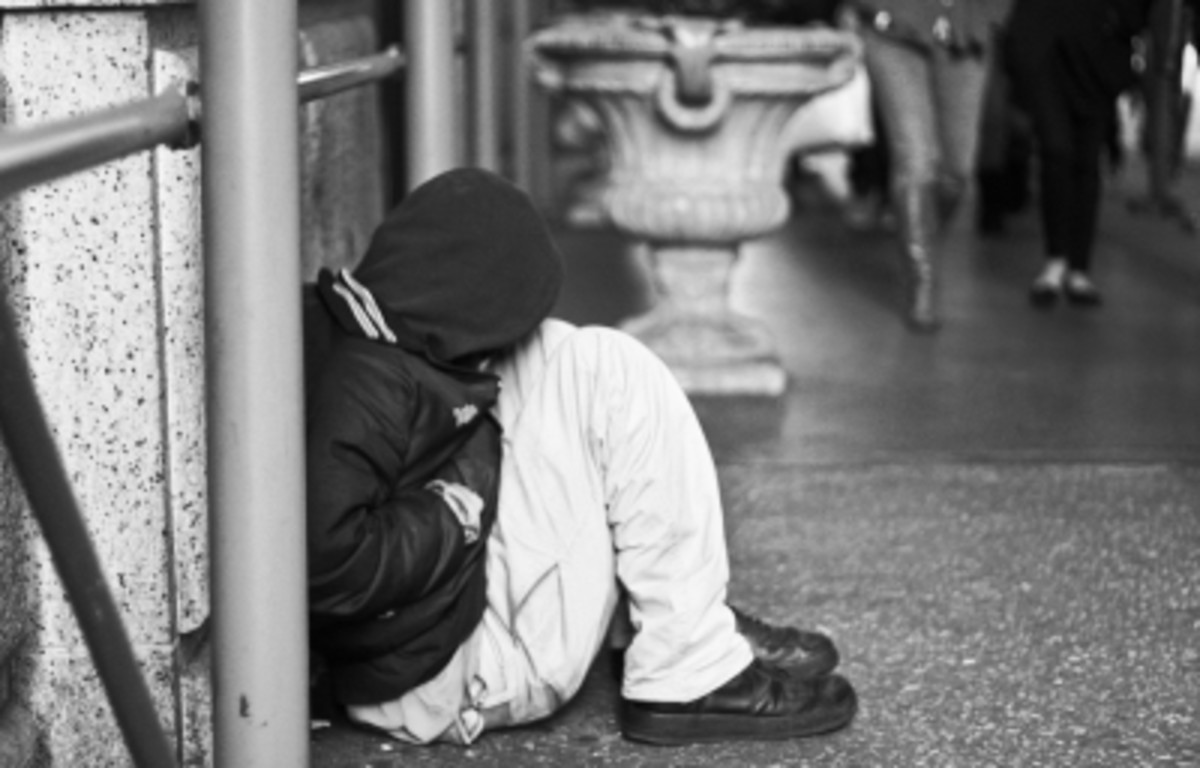Teen Runaways--A Dangerous and Tragic Problem
Facts and Statistics about Runaways
A frightening problem in American society today involves runaways. One in seven teenagers between the ages of 10 and 18 will run away from home this year, and it has been estimated that between one and three million teenagers are living on the streets in the United States. Teens leaving home are usually running from something rather than to something; for over 20% of runaways, it is an environment with the potential for physical or sexual abuse. Factors inside the home contributing to this problem might also include a home where criminal activity, violence, or substance abuse is known to occur. Reasons can also consist of problems with school, boyfriends or girlfriends as these issues relate to home life, or difficulties with parents or guardians. There is no one particular issue. The problems that can make teens feel they have no choices but to run are myriad.
Life on the streets represents extreme danger for runaways. According to a recent Family and Youth Services Bureau Report, 35% of runaway and homeless youth had used drugs; 26% have attempted suicide; 33% were assaulted and/or robbed on the streets; 66% had trouble meeting basic needs away from home; and 80% had attempted or committed a theft-related activity. While homeless, youth often suffer from poor hygiene, lack of sleep, high exposure to violence (both as victims and witnesses) and difficult weather conditions, which can result in a variety of medical problems. Sometimes runaways exchange sex for food, clothing, shelter, or protection, increasing their risk for HIV infection and other sexually transmitted diseases. Other common threats to runaway and homeless youth include depression, thoughts of suicide, and high rates of intravenous drug use.
The Dangerous Life of a Runaway






Sandy's Story
In the summer of 1986, I moved into a house I purchased on the north side of town. It was an older house but I liked the neighborhood, with large oak trees and a huge park directly across the street. My home sat on a half-acre of land—not an enormous plot, but enough to have a sizable garden. A few days after getting settled, I opened the small shed in my back yard and noticed a paper cup on its floor. I was the only one to use the shed, and I wondered where this water cup came from. The next evening I sat on my front porch and watched softball games played across the street. After watching absent-mindedly for about a half-hour, I observed a young woman moving about the crowds that seemed out of place among the ballplayers and spectators. The girl was small and thin, with long black hair that spilled carelessly down her back. She wore a thin shirt and cut-off jeans. She wandered aimlessly and looked to be carrying something. It seemed obvious she wasn’t there to watch the softball games.
I stepped outside again a few hours later and noticed the girl was still there, long after the ball games ended. I walked across the street to check on her, cautiously approaching to ensure I didn’t frighten her. She carried two plastic jugs filled with stones. I softly said hello and asked if she was okay, but she barely acknowledged my presence. I asked her name, but still received no response. I told her I would help carry the jugs if she wanted to sit on my front porch, across the street. She nodded and surrendered one of the plastic bottles. Like a small child, she extended her now-empty hand to be led from the park. I asked if she preferred to sit outside or come into the house, and she gestured toward my front door.
We stepped inside and I offered her a chair, but she opted to sit on the floor in the corner of the living room. She told me her name was Sandy but offered no other information. I asked for her last name but Sandy didn’t reply. She didn’t respond to my questions about her age, either, which I guessed to be in the late teens or early twenties. I didn’t ask anything further. I told her she was safe and no one would harm her. I asked if she was hungry, and she nodded in the affirmative. I boiled some rice and she accepted a bowl, but actually ate very little. After she finished, I sat on the floor with her. The look in her eyes revealed great sadness and pain, and I wondered what tragedies this girl had endured. I told her stories of my younger days to convince her I understood what it was like to be alone, but suspected she attended more to the sound of my voice than my actual words. I spoke in soft tones until she stretched out on the floor. When I offered her a light blanket, she smiled and draped it over herself. I sat beside her until she fell asleep, and then moved to the couch in the same room. I resolved to get help for her in the morning.
The next morning I gently woke her and explained I wished to bring back some breakfast for us. I asked if she was okay; she replied that she was. I was encouraged when she offered a faint smile and admitted she was hungry. I judged her condition to be improved from the night before. She still seemed disoriented, but not as much so. She was willing to speak a little. I asked Sandy if she needed to go anywhere and she said not right away, but soon she needed to head for a better place. I wondered to myself what such an odd comment might imply. I asked her to come with me to get food, but she predictably declined. I told her I would return in less than fifteen minutes. Sandy smiled again and nodded. I debated whether to ask her to leave my house or let her stay inside while I was gone. I impulsively invited her to sit in the living room and wait for my return. Sandy returned to her spot on the floor. I hurried away to buy bagels and milk at the corner market, but when I returned and saw my front door standing open, I knew Sandy was gone. I contacted the police and described how I encountered her, and an officer promised to search for her. He assured me that my efforts to help were fine—she would have run if I called anyone, and I could not restrain her against her wishes. I drove through the neighborhood hoping to spot her, but realized I was confined to the streets and she was not. I continued looking, but after a few hours I reluctantly gave up.
A parting gift
The following afternoon I did some work in the back yard, and when I opened the shed to fetch my lawn mower, I spied a paper sack in the corner of the shed. I looked inside and saw a few simple articles of women’s clothing. Next to the sack sat two dusty jugs filled with stones. Sandy had left her possessions behind in the shed before she departed. I left her things untouched in the hopes she would come back for them, but she never did. I wondered where her “better place” was, and hoped it was one of safety. I was overcome with emotion, and sat outside the shed and wept for a few moments. Later I wondered if she were possibly more than just a disoriented runaway, and speculated that perhaps she was an angel or benevolent ghost. My father believed God sometimes sent people to him for assistance to test his willingness to help a stranger. Perhaps my compassion for others was being tested. The bag of clothes remained for approximately a month before I decided Sandy would not return. I set aside the jugs filled with stones through the winter but eventually disposed of them. I kept several of the stones from each jug and viewed them as a gift. If Sandy were an angel or ghost, I hoped keeping a few of the stones might offer a link to her spirit.
I am filled with conflicting emotions in the telling of this story. I have always believed I failed Sandy by not acting immediately. I should have telephoned the police or a social service agency at once, but believed if I did she would have left in fear or panic, which caused me to hesitate. Since she felt safe enough to spend the night on my living room floor, I should have used my second chance to call someone that morning. It was foolish to believe she would remain until I returned from getting food, but I hoped she realized I had her best interests at heart. I still occasionally wonder whatever happened to the frail apparition that appeared in the ball park on that hot summer evening. I remain sadly hopeful that wherever she was (and is now), Sandy remains safe and content.
There are many social service agencies and hot lines that can be contacted for the safety and protection of a runaway. Crisis centers exist in many U.S. cities that will shelter runaways for several weeks while offering counseling, recreational activities and help to reunify the teen with parents. These fine organizations exist for the benefit of troubled teens everywhere. They are for kids that are lost, confused, and need our help. They are for people like Sandy.

Read other hubs about social or societal issues
- Street Gangs in my Hometown: the Beginnings
Despite our best efforts, most of us have found ourselves in situations we did not want or intend to be involved in at one time or another. We interact with people we shouldn't be socializing with, make... - Working Class Pride
Work is both a human and economic necessity. It is the foundation of contemporary society. Our houses, schools, hospitals, and farms are all the result of human labor. Our art and technology are... - Vice Taxes: A Legitimate Means of Generating Revenue or a Curtailing of Freedoms?
After July 1st 2010, the cost of tanning will include a 10% federal tax included in the health care reform bill. This idea is a variant of vice taxes, which have assessed a surcharge for decades on... - Homeless Shelters: The Pertinent Issues
My hometown is known for the quaint, eclectic shops that line the five blocks of its downtown business district. Fine dining, new and consignment clothing stores, antique malls, art and crafts... - Are Men Oppressed?
What is oppression? Oppression is defined as the exercise of authority or power in a cruel, unjust or burdensome manner. It is an abuse of power typically manifested by categorizing and dividing... - Painting Versus Music--The Financial Dilemma
Why do musicians achieve fame and fortune in their lifetime, while visual artists struggle for notoriety and the financial independence to support their creative endeavors? What makes the Rolling Stones...









